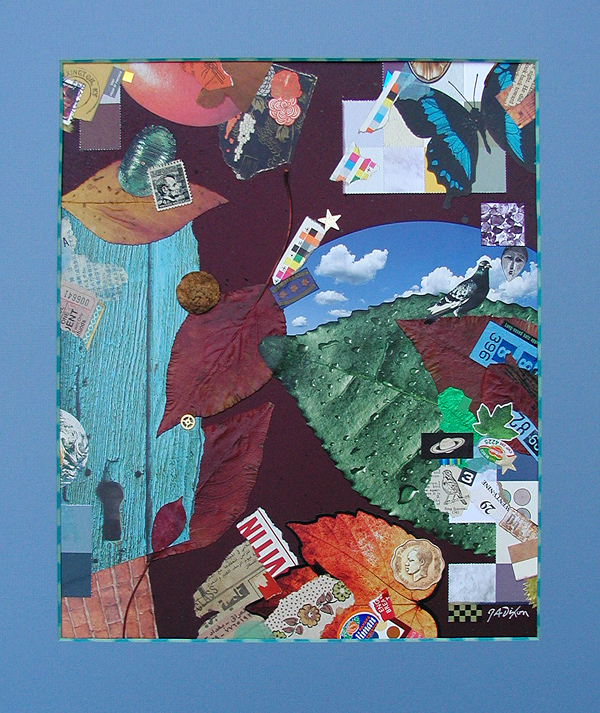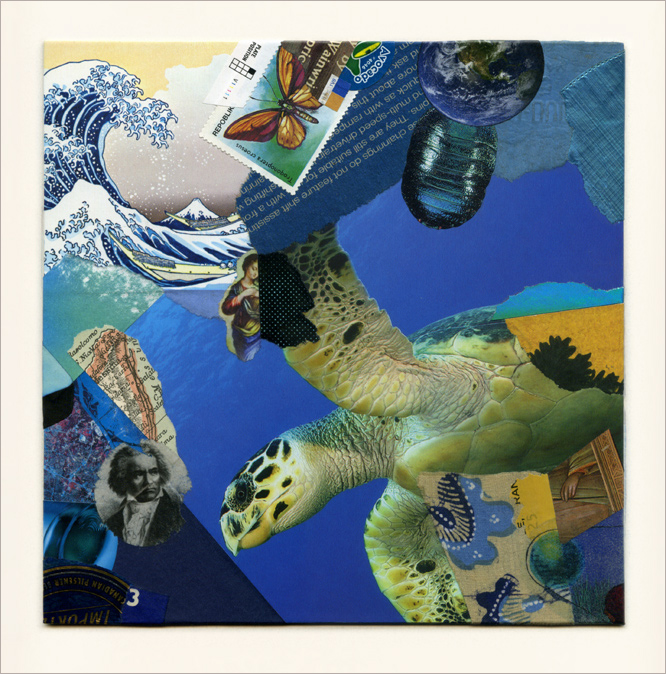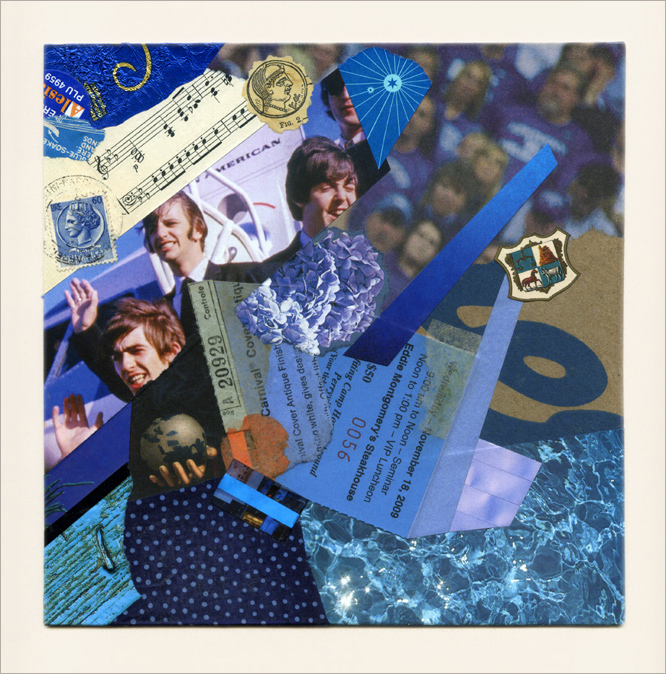Archive for the ‘Larger Works’ Category
Monday, July 13th, 2015
“Schwitters subjected his bits of flotsam to an organizing principle resembling the vertical scaffolding of Analytic Cubism, thus transforming the diverse components into formal elements.”
— Nancy Spector
Color and composition may be the most common denominators of all visual art. Collage, by its nature, relies on a combination of separate, often disparate elements, and those two fundamentals generally play a more prominent role in the finished effect, but that does not make collage essentially a category of abstraction. A minimalist concept built on a provocative juxtaposition or image insertion can be a predominantly figurative or representational approach, even if symbolic or surreal ideas are introduced. On the other hand, collage artworks rooted in the seminal innovations of Kurt Schwitters pay primary tribute to a tradition of abstraction now more than a century old. Of course, the medium had other early pioneers, but it is difficult to imagine the trajectory that collage might have taken without his towering influence. Personally, I have no qualms about continuing to respectfully mine the rich vein of creative ore he helped to expose. Whether it proves to be a nonrenewable resource has yet to be shown.

Selective Fusion
collage on structured panel by J A Dixon
13.375 x 11.75 inches
not for sale
Posted in Collage, Combined Mediums, Cubism, Dada, Gift Art, Homage, Influences, J A Dixon, J Kolář, K De Blauwer, K Schwitters, Larger Works, Links, Maximalism/Minimalism, Merz, Methodology, Surrealism, Symbolism | No Comments »
Wednesday, February 11th, 2015
“To get to be somebody who gets to love what they do for a living, that’s so rare, and so there must be some kind of price you have to pay.”
— Ethan Hawke
The Target Practice Project shows no signs of winding down. Two of the vintage targets from L T Holmes were still in my possession, so I started another piece last summer. 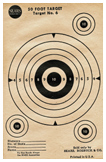 It had a stubborn inertia of its own that repeatedly would cause me to set it aside until the next phase came into focus. It’s funny how a certain artistic progression can have “a mind of its own,” so to speak, and others can fall into place like clockwork. One of the things I appreciate most about collage is getting into an effortless “flow,” but there is something to be said about having to dig deeper to pull the solution from a more difficult effort. In those situations, a different kind of fulfillment is the reward — the sense that I have pushed by craft to a new level. It may not seem as joyful, but I feel just as fortunate to be involved in something I love to do. And it makes me stop and think that perhaps, when that easier process is flowing, it could be the exact moment to mix it up, take a risk, lose my footing, defy the comfort, and pay the price.
It had a stubborn inertia of its own that repeatedly would cause me to set it aside until the next phase came into focus. It’s funny how a certain artistic progression can have “a mind of its own,” so to speak, and others can fall into place like clockwork. One of the things I appreciate most about collage is getting into an effortless “flow,” but there is something to be said about having to dig deeper to pull the solution from a more difficult effort. In those situations, a different kind of fulfillment is the reward — the sense that I have pushed by craft to a new level. It may not seem as joyful, but I feel just as fortunate to be involved in something I love to do. And it makes me stop and think that perhaps, when that easier process is flowing, it could be the exact moment to mix it up, take a risk, lose my footing, defy the comfort, and pay the price.
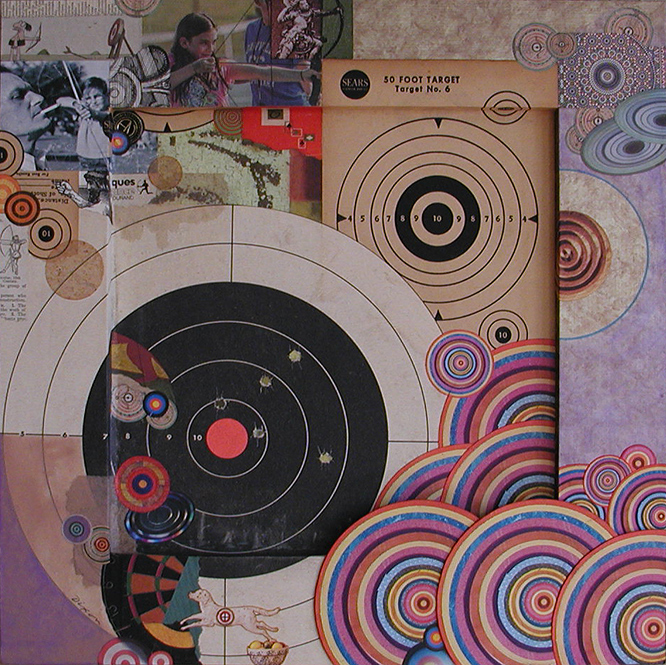
Bull’s-eye Nosegay
mixed-media collage on framed panel
vintage target from L T Holmes
17 x 17 inches, currently not for sale
featured at The Target Practice Project
Posted in Collaboration, Collage, Combined Mediums, J A Dixon, L T Holmes, Larger Works, Links, Methodology | No Comments »
Saturday, January 17th, 2015
“Self-consciousness is the enemy of all art, be it
acting, writing, painting, or living itself, which is
the greatest art of all.”
— Ray Bradbury
I was honored, but also thrilled, to accept my third invitation for the “New Year New Art” exhibition at our local Community Arts Center, one of the outstanding cultural institutions in Central Kentucky. The extraordinary thing about this annual show is a freedom to display, 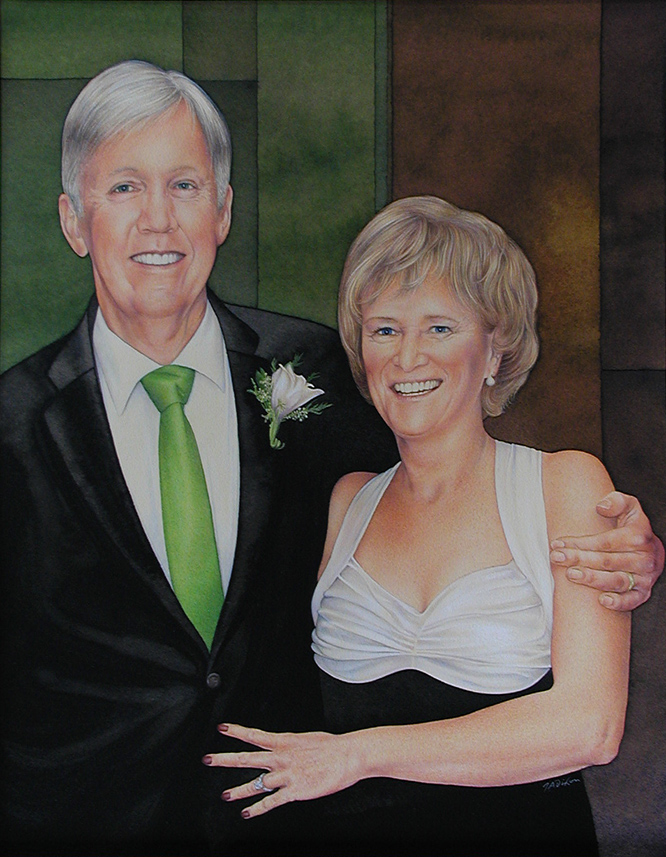 without juried appraisal, one or two pieces for which one has passion. The only restriction is that the work not be over four months old. I decided to create something around the holidays specifically for the opportunity, and, because I had just completed a difficult portrait commission in watercolor and pencil, a more personal form of expression was a welcome idea. I had used an illustrative, “news-magazine-cover” style that always has had great appeal to me, but that over the years has challenged my self confidence and repeatedly has put my perfectionist tendencies to a stress test. Fortunately, I have discovered a universal antidote for all that — collage.
without juried appraisal, one or two pieces for which one has passion. The only restriction is that the work not be over four months old. I decided to create something around the holidays specifically for the opportunity, and, because I had just completed a difficult portrait commission in watercolor and pencil, a more personal form of expression was a welcome idea. I had used an illustrative, “news-magazine-cover” style that always has had great appeal to me, but that over the years has challenged my self confidence and repeatedly has put my perfectionist tendencies to a stress test. Fortunately, I have discovered a universal antidote for all that — collage.
For the January exhibition I wanted to do something fresh, to surprise myself, but also, as most artists prefer, to create something that would please others, that would excite an individual’s subjective response. Mixed-media collage is a medium that people find both provocative and delightful, and to which I am strongly committed, but that should be no surprise to anyone who follows this site. As a working designer and graphic artist, I return to collage on a nearly daily basis as fuel for my creative life and a potent solvent for that side of myself which continually flirts with self doubt if something might not turn out exactly as I imagine it should. All that nonsense fades away when I incite the spontaneity of this magnificent medium.
Of course, I remain captivated by the ability to make something of value from material that otherwise would be thrown away or recycled. I enjoy creating artwork that has bold visual appeal from across a room, but that also provides a depth of interest at close observation, with many stimulating details within an intimate viewing distance. “Matthew’s Touchonic Lodge” is primarily an abstract composition, and I salute two collage artists whose work I admire with my title and embedded allusions. “Apparition Rising” uses ingredients that are more whimsical, but perhaps slightly “spooky” at the same time. A phrase from a song that I like sparked the genesis of its assembly. Both are significantly larger than my typical miniature, more dimensional than a standard flat surface, and, as with all my designs, I worked intuitively with color, contrast, and the activation of space. In addition, I continue to push the effect of collage as a stand-alone treatment that does not demand the protective glass barrier. Please let me know what you think of these new works.

Matthew’s Touchonic Lodge
mixed-media collage by J A Dixon
22.5 x 20 inches, December 2014
title source: homage to artists M Rose and C Touchon
Purchase this artwork!
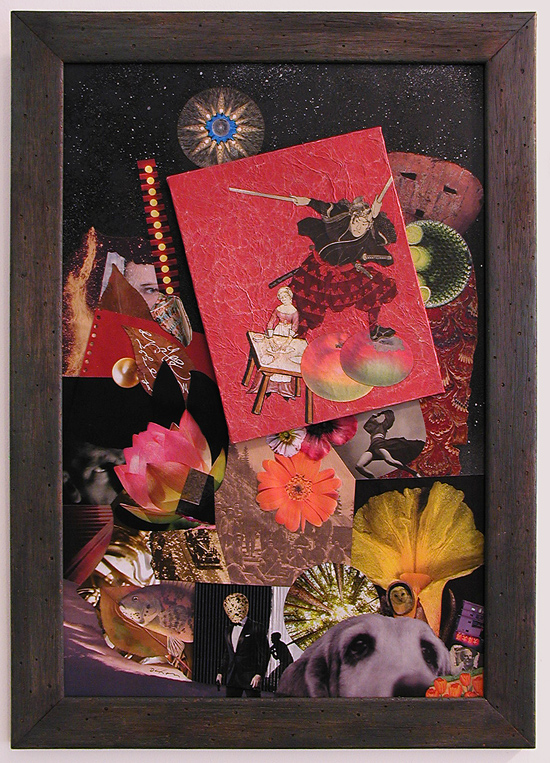
Apparition Rising
mixed-media collage by J A Dixon
19.5 x 27.5 inches, December 2014
title source: from the song “Ghost Town” by J Brasfield
also available for purchase
Posted in 1) Available!, C Touchon, Collage, Combined Mediums, Commissions, Exhibitions, Homage, Illustration, Influences, Ingredients, J A Dixon, Larger Works, Links, M Rose, Methodology, Music, New Year New Art, Pencil, Portraits, Watercolor | No Comments »
Wednesday, November 5th, 2014
“Curiosity about the unknown has no boundaries. Symbols, images, place and cultures merge. Time slips away. The stars, the cards, the mystic vigil may hold the answers. By shifting the point of view an inner spirit is released. Free to create.”
— Betye Saar
Cosmosaic was the word I chose in 1998 for a collage series that marked my first efforts at bringing to larger artworks what I had learned from creating numerous miniatures. They were intended as gifts for loved ones, with each focusing on the unique soul of the intended recipient. After completing fourteen of them over a seven-year span, I produced another in 2006 to exhibit with The Society of Layerists in Multi–Media. It relied on a more time-intensive technique than prior Cosmosaics, was more deliberate in conceptual development, was meant for no specific individual, and was more overtly metaphysical than any collage artwork I had done previously. As far as I was concerned, it was clearly a Cosmosaic, but it also stood apart from the series pattern and subsequently made the rounds of various exhibitions between periods of storage until we expanded our gallery space last year. Just as I had settled into the idea that this piece might always reside at my studio, it found a buyer this past weekend during the Open Studios ARTTOUR.
After looking through some old promotional notes, I was a bit surprised to discover the degree to which I had described the piece in spiritual terms:
“The largest composition in an eight-year series, this most recent ‘Cosmosaic’ represents my intensified concern with symmetry, proportion, and balance, both thematically and aesthetically. A spontaneous blending of found material — symbolic images, familiar icons, and mundane fragments — it shapes an interpretation of ‘the moving stream of life.’ The visual approach reinforces my sense of a profound interconnectedness, with eternal access to atonement, forgiveness, illumination, opportunity for soul attainment, and individual freedom through the Universal Christ.”
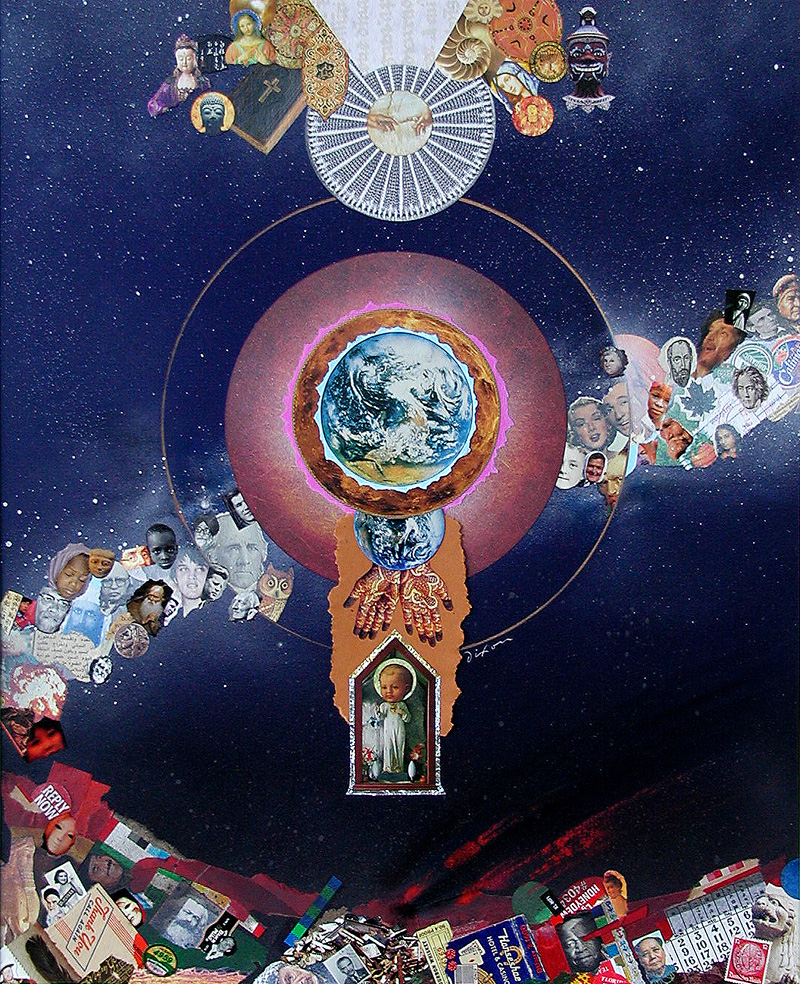
Fifteenth Cosmosaic
mixed-media collage by J A Dixon
17 x 21 inches
• S O L D
Posted in Collage, Combined Mediums, Cosmosaic Series, Exhibitions, Gift Art, J A Dixon, Larger Works, Links, Methodology, Symbolism, Technique, Theme/Variation | No Comments »
Friday, June 20th, 2014
“Art is the only way to run away without leaving home.”
— Twyla Tharp
Places to go, ways to travel, and flights of fancy . . . A series of local exhibitions at the Boyle County Public Library’s Mahan Gallery has been an effective catalyst for me to create new pieces based on unifying themes. I have recently experienced mixed emotions about the ubiquity of vintage material in contemporary collage, but the topic of this show had me hunting through my morgue of old postcards and other relics to produce a pair of artworks on canvas. Yes, we all dig the instant “gravitas” of using old stuff, but will art historians say we copped out, if we do not accept the challenge of working with ingredients from our own present-day culture? I am just musing about the state of the medium, not any artist in particular. I see a hundred or more collage artworks posted online each week that rely exclusively on 20th-century material, and much of it seems stuck in a bygone avant-garde style. It is important for all of us to keep in mind that the Dada artists so widely emulated worked with material from their own time. Perhaps the opportune approach is to blend it all together, past and present. As post-centennial collage artists, we also owe each other a bit more constructive criticism than I currently observe. As the details below illustrate, I have absolutely nothing against using vintage material. I think that artists such as Hope Kroll or Fred Free or Matthew Rose (to offer only three examples) are creating some of the more exceptional work in the medium. On the other hand, there are many who seem to be using it as a crutch, over-relying on the antique impression of the ingredient material itself, rather than the juxtapositional synergy or overall aesthetic effect.
As the artworks for “Places” also demonstrate, I continue my effort to liberate a collage from the traditional glass barrier. To do so, it is necessary to find a proper level of protective sealant to balance visual appeal and durability. I prefer to avoid an overly polymerized impression with a finished surface. Because I primarily work with found material, I have had to learn which ingredients can handle direct exposure (for an effect similar to the painted surface). Nevertheless, some are simply too fragile and will always require a safe abode under glass.
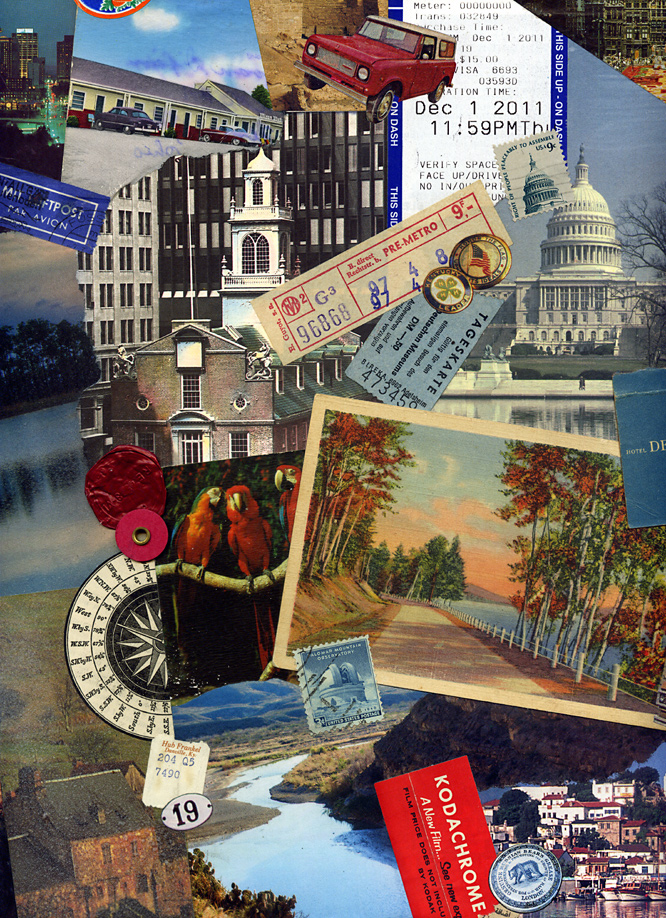
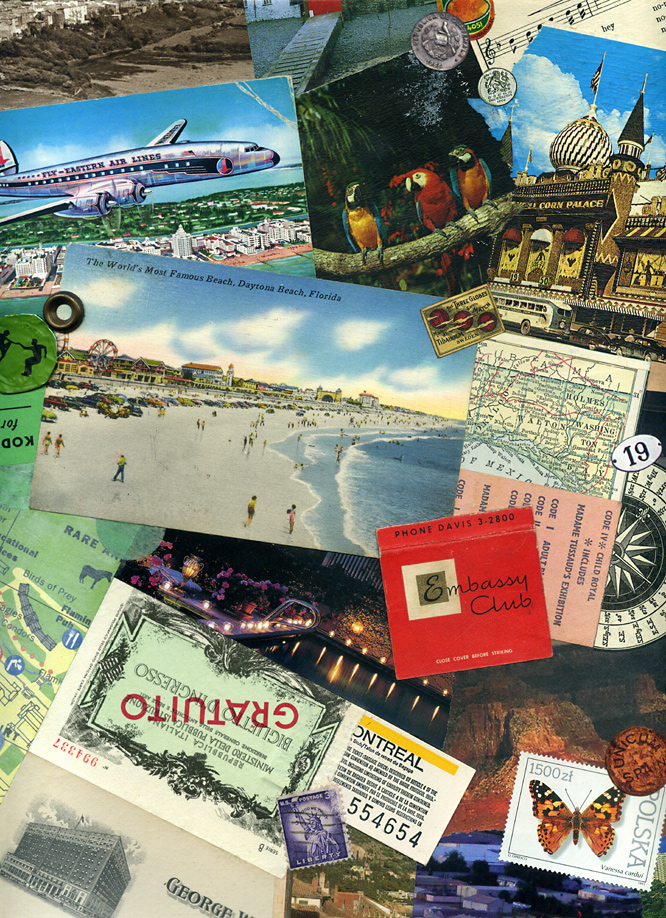
left: Here and There (detail)
right: Now and Then (detail)
two collage artworks on canvas by J A Dixon
12 x 12 x 1.5 inches each
available for purchase
Posted in 1) Available!, Acrylic, Collage, Criticism, Dada, Details, Exhibitions, F Free, H Kroll, Ingredients, J A Dixon, Larger Works, Links, M Rose, Methodology, Morgue, T Tharp, Technique | No Comments »
Friday, June 13th, 2014
“Put stardom and success aside and just go out and do it. It’s like painting. Don’t talk about it. Or, like writing. Put it down.”
— Jonathan Winters
“Don’t think about making art, just get it done. Let everyone else decide if it’s good or bad, whether they love it or hate it. While they are deciding, make even more art.”
— Andy Warhol
After learning about a call for entries on the theme of “water,” at the new First Southern Community Arts Center in nearby Stanford, Kentucky, I leaped at the theme with a minimum of thought or calculation. I was overdue for the opportunity to create a larger piece, and it was good for me to push aside all the internal questions and mental gyrations which too often intrude on the genesis of a new work or new point of public contact. I mixed a batch of wheat paste, added a stabilizing measure of white glue plus acrylic medium, and dug into my stash of nature images. Hand manipulation of the surface with wet, rectilinear ingredients became an almost papier-mâché-like process that soon involved shapes of pure color. A sort of “low-tech pixelization” began to suggest the gentle clash of primeval and present — a Garden of Eden sweeping forward to the modern digital world.
When I delivered my artwork to the gallery and was assisted by a local artist and volunteer, Roni Gilpin, I could not have been treated better. Chasing my passion for collage, meeting pleasant people, and breaking into a new venue — I must remind myself from time to time that this is what it’s all about. I am excited about today’s artist reception, 4 to 7 pm (in downtown Stanford, adjacent to the superb Bluebird Cafe). Family is visiting from Davis, California, and everything is shaping up for an exceptional evening!
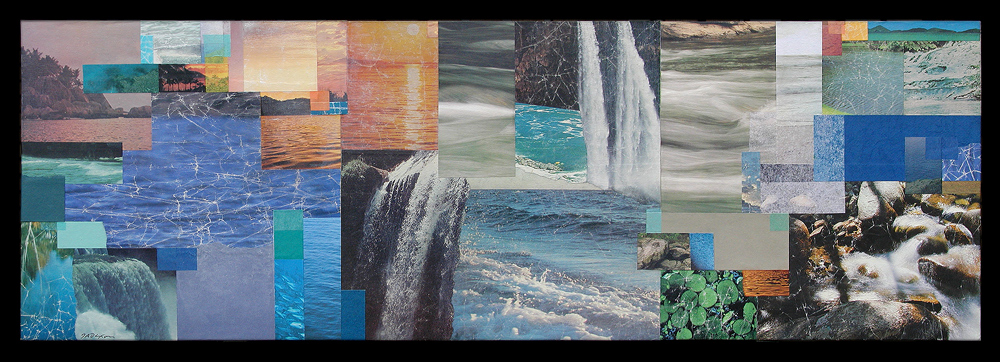
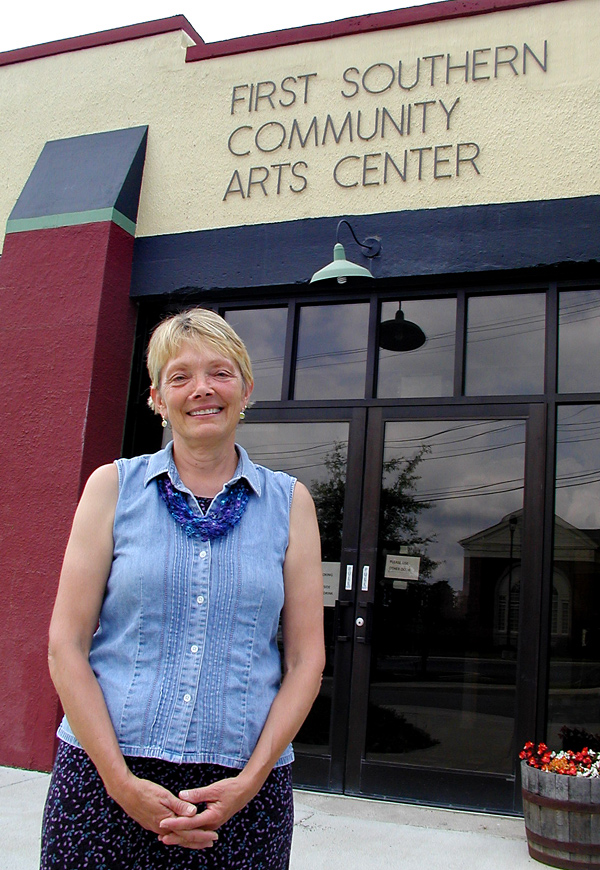
Many Waters Under Heaven
mixed-media collage
by J A Dixon
33 x 11.25 x 1.5 inches
Purchase this artwork!
Roni “Sister” Gilpin
volunteering at
First Southern Community
Arts Center
Posted in 1) Available!, A Warhol, Acrylic, Combined Mediums, Exhibitions, Ingredients, J A Dixon, J Winters, Larger Works, Links, Priorities, Technique | No Comments »
Monday, June 9th, 2014
“We need a little confusion.”
— Neil Gaiman
The Great American Brass Band Festival’s milestone 25th event is now in the archives. The finale was one of the most satisfying concerts in the history of the Kentucky festival. My appreciation goes to those who made it all happen one more time! I am pleased to have played a small part.
When I was first approached about lending my creative experience to the effort, I pitched the idea of a traditional collage to mark the 25th, using scraps from memorabilia of the last quarter century. A decision was made to go a different direction, but I could not put the idea aside. The result is “Brass 25,” a tribute to my community’s exceptional contribution to the American musical and cultural scene.
Is “commemorative collage” art? Perhaps not. Some might make the case that no example of the medium has approached “high art.” In my opinion, such a viewpoint fails to consider the 100-year impact that the medium has had on our visual landscape and the evolution of our aesthetic perceptions. It neglects the seminal role of Schwitters, Höch, Cornell, Kolář, and others. For me, the core relationship between mundane material and the art of collage transmits a unifying principle. When the remnants of ordinary life are physically re-purposed to resolve a unique compositional harmony, the culminating artifact can achieve a transcendent tone and offer a shared experience with each participating observer. If that is not art, stripped of elitist notions, then what is?
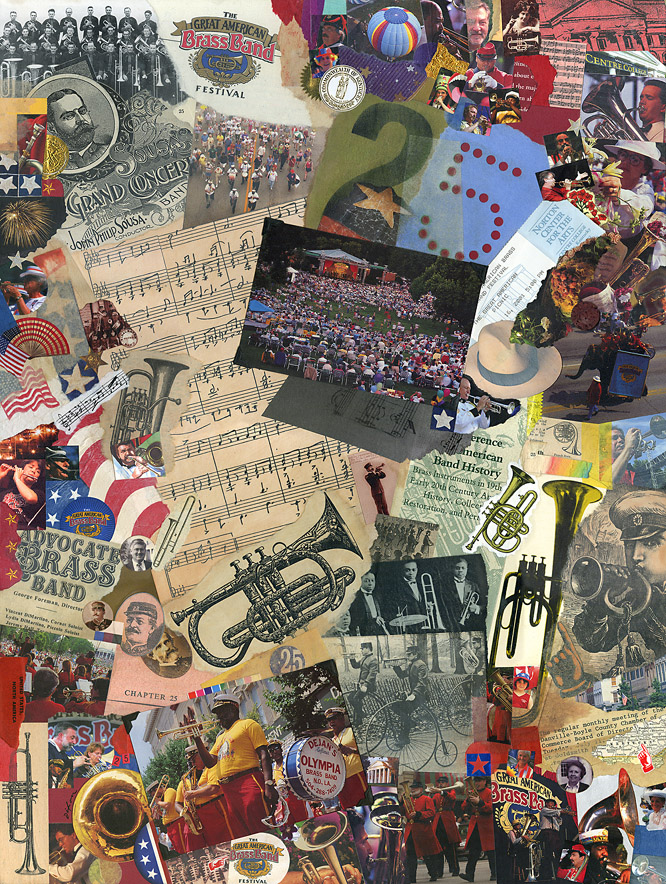
Brass 25
commemorative collage by J A Dixon
17.5 x 23.5 inches
available for purchase
Posted in 1) Available!, Applied Arts, Collage, H Höch, Illustration, Influences, J A Dixon, J Cornell, J Kolář, K Schwitters, Larger Works, Methodology | No Comments »






